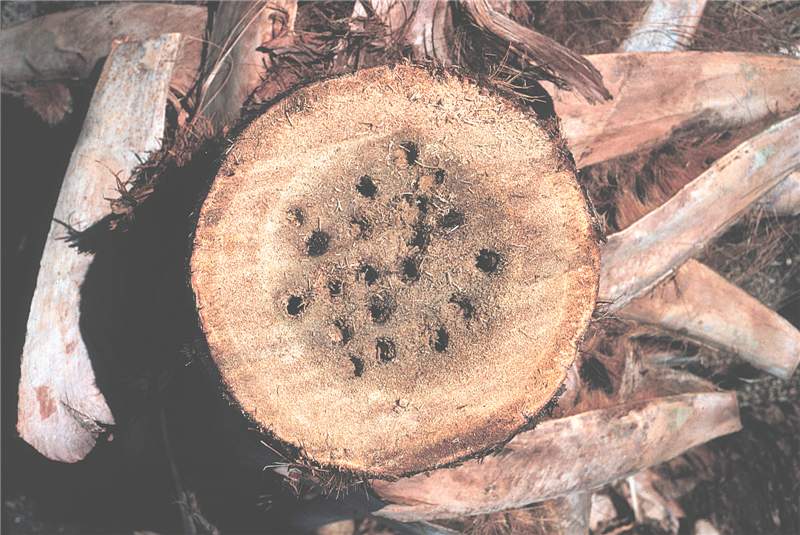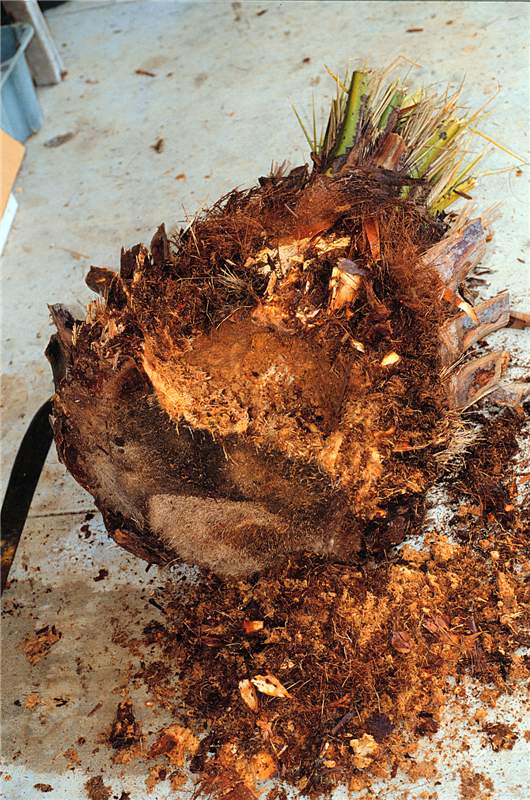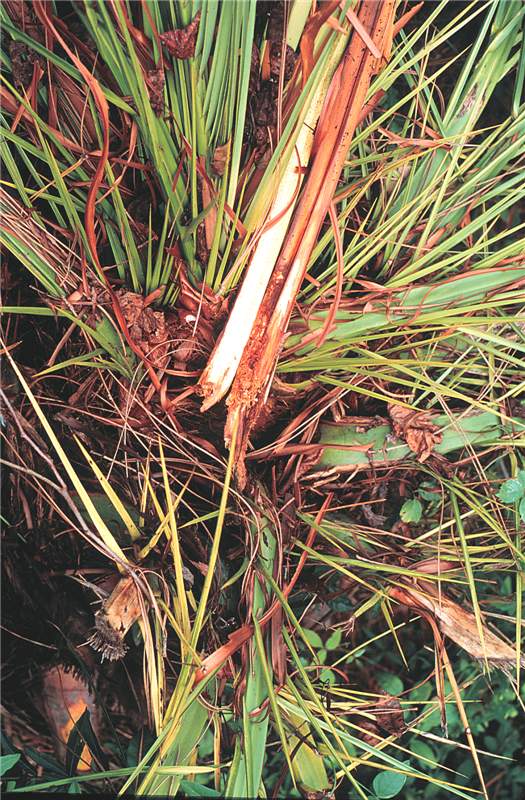Palmetto Weevil Damage
|
Figure 1. Cross section through Sabal palmetto infested with palmetto weevil (Rhynchophorus cruentatus). Photo by R. Giblin-Davis.
|
|
Figure 2. Inside of Phoenix canariensis infested with palmetto weevil (Rhyncophorus cruentatus). Photo by R. Giblin-Davis.
|
|
Figure 3. Damage caused by palmetto weevil (Rhynchophorus cruentatus) to new growth of Phoenix canariensis. Photo by R.Giblin-Davis.
|
Symptoms
Palms infested with palmetto weevil (Rhynchophorus cruentatus) may show a number of collapsed leaves hanging along the trunk. In severe infestations, the entire crowncrown:
see canopy
of a palm may fall over or drop off due to extensive burrowing by the larvae (Figs. 1 and 2). Older leaves can easily be pulled out, revealing damaged petioles and leaf bases (Fig. 3).
May be confused with
Silky sugar cane weevil (Metamasius hemipterus) cause similar damage to leaf bases and petioles, but holes are much smaller. Banana moth (Opogona sacchari) larvae cause similar damage within palm trunks.
Cause
Damage to leaf petioles and bases is caused by the burrowing of early instar larvae of several species of Rhynchophorus. Later instar larvae can burrow into the trunk tissue and potentially destroy the meristemmeristem:
the growing region of a plant, a special area of undifferentiated cells wherein new cells and organs are developed
.
Occurrence
Rhynchophorus cruentatus is a serious problem on Phoenix canariensis, Bismarckia nobilis, and other species in Florida, while R. palmarum is a pest of Elaeis guineensis, Cocos nucifera, and other species in Central and South America, R. ferrugineus is a problem on Phoenix dactylifera in the Arabian Gulf area and on Cocos nucifera in the Philippines and Southeast Asia but has been found in California, and R. phoenicis is a pest on Elaeis guineensis, Phoenix spp., and Borassus sp. in Central and Southern Africa.





